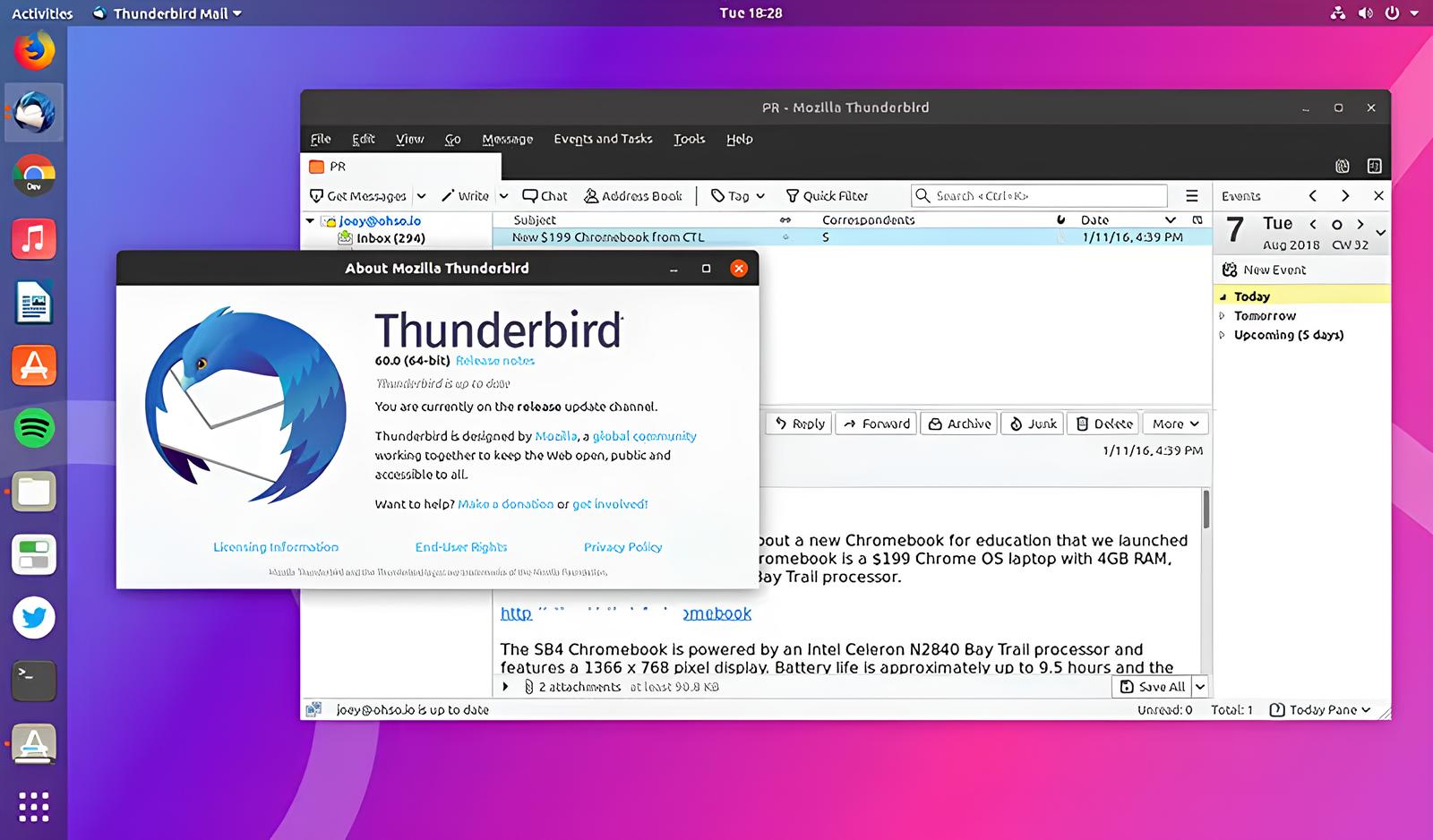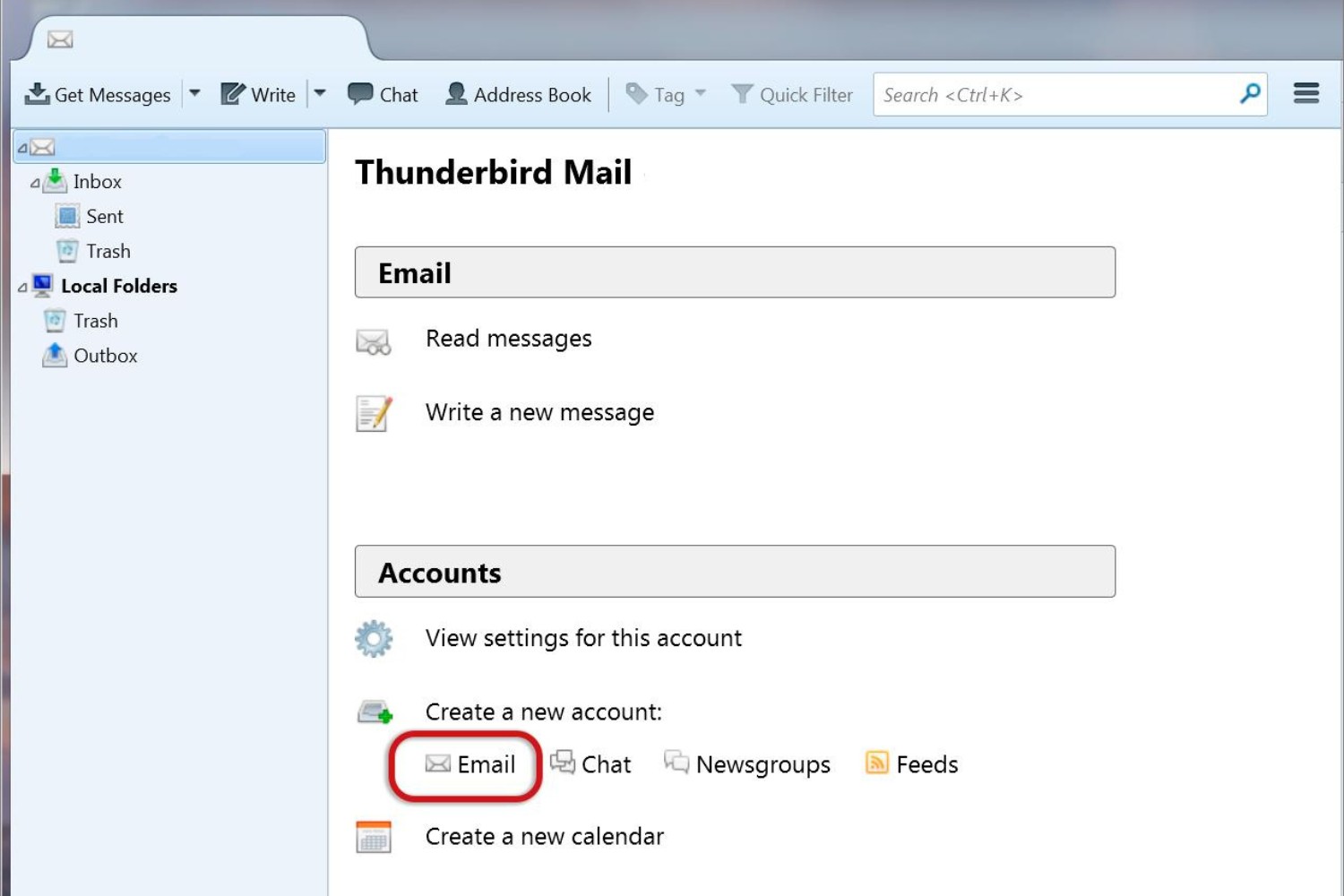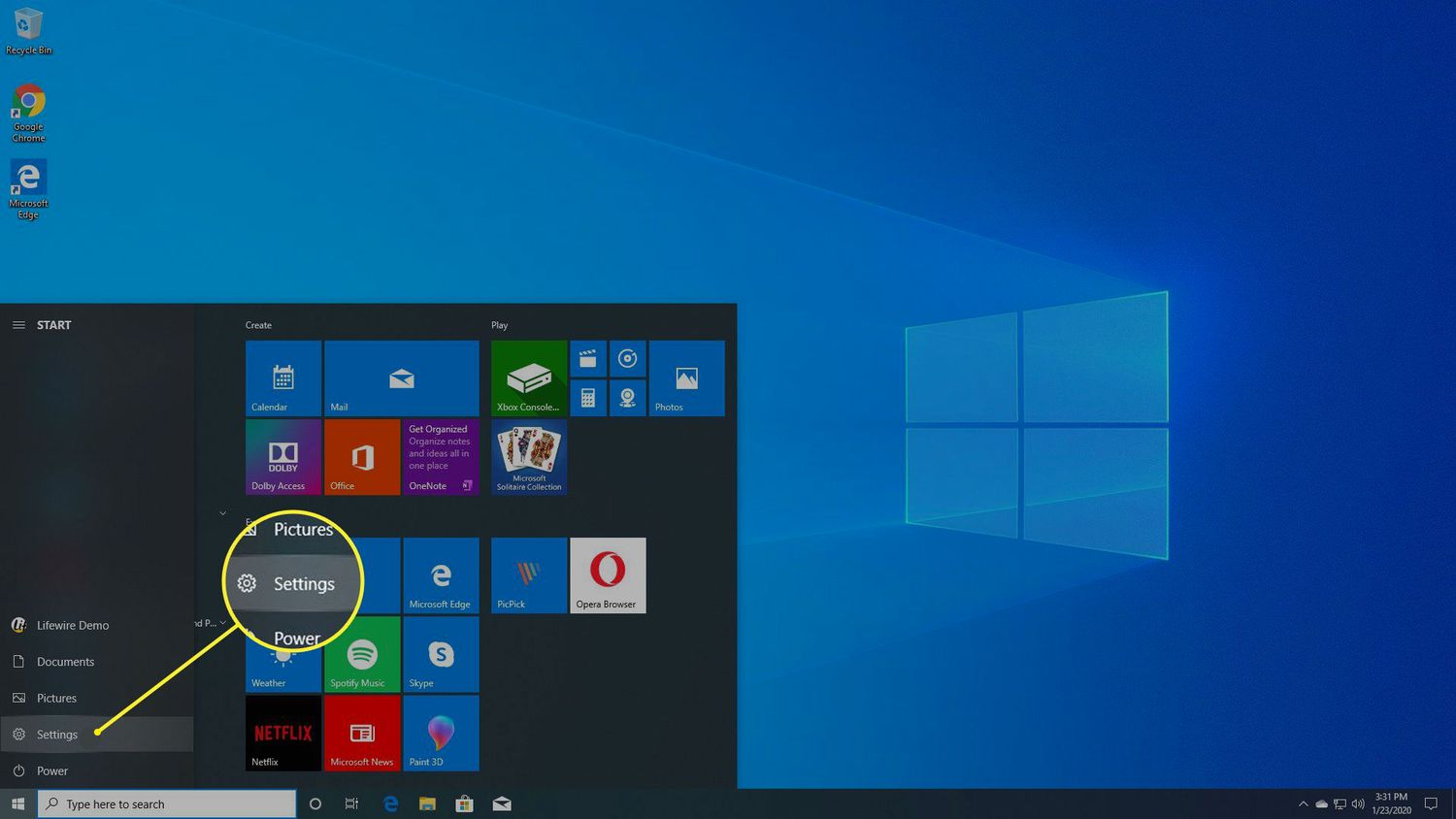Introduction
Mozilla Thunderbird is a popular email client that offers a range of features to manage and organize your emails efficiently. Whether you're a casual user or rely on email for professional communication, Thunderbird provides a user-friendly interface and customizable options to streamline your email experience. As you delve into the world of Thunderbird, you may find yourself curious about the location of its files, how to change their storage location, and the best practices for backing up and restoring these essential files.
Understanding where Mozilla Thunderbird stores its files is crucial for various reasons. Knowing the default location of these files can help you locate and manage them effectively. Additionally, being aware of how to change the storage location can be beneficial if you need to free up space on your primary drive or simply prefer to store your data in a different location. Furthermore, learning how to back up and restore Thunderbird files is essential for safeguarding your emails, contacts, and other important data from potential loss or corruption.
In this comprehensive guide, we will explore the default location of Mozilla Thunderbird files, the process of changing their storage location, and the best methods for backing up and restoring these files. By the end of this article, you will have a clear understanding of where Thunderbird stores its files and how to manage them effectively, ensuring the security and accessibility of your valuable email data. Let's embark on this journey to unravel the mysteries of Mozilla Thunderbird files and empower ourselves with the knowledge to navigate the intricacies of email management with confidence.
Default Location for Mozilla Thunderbird Files
When you install Mozilla Thunderbird, the email client creates a default directory on your computer to store its essential files, including emails, contacts, settings, and add-ons. Understanding the default location of these files is crucial for various reasons, such as locating and managing them effectively, troubleshooting issues, and performing backups. By default, Mozilla Thunderbird stores its files in a dedicated user profile directory, which varies depending on the operating system you are using.
Windows
On Windows operating systems, the default location for Mozilla Thunderbird files is typically within the user's AppData directory. Specifically, the path to the Thunderbird profile folder is as follows:
C:\Users\YourUserName\AppData\Roaming\Thunderbird\Profiles\xxxxxxxx.default\
In this path, "YourUserName" represents your Windows user account name, and "xxxxxxxx.default" denotes a unique alphanumeric string assigned to your Thunderbird profile. Within this directory, you will find subfolders containing your emails, contacts, settings, and other essential data.
macOS
For macOS users, Mozilla Thunderbird stores its files within the user's Library directory. The path to the Thunderbird profile folder is typically as follows:
/Users/YourUserName/Library/Thunderbird/Profiles/xxxxxxxx.default/
Similar to the Windows path, "YourUserName" corresponds to your macOS user account name, and "xxxxxxxx.default" signifies the unique alphanumeric string assigned to your Thunderbird profile. Within this directory, you can access and manage your email data and configuration files.
Linux
On Linux distributions, the default location for Mozilla Thunderbird files follows a similar pattern. The Thunderbird profile folder is typically located at:
/home/YourUserName/.thunderbird/xxxxxxxx.default/
In this path, "YourUserName" represents your Linux user account name, and "xxxxxxxx.default" denotes the unique alphanumeric string assigned to your Thunderbird profile. Within this directory, you will find the essential files and folders that constitute your Thunderbird profile.
By understanding the default location of Mozilla Thunderbird files on your specific operating system, you can navigate to these directories to access, manage, and troubleshoot your email data effectively. Additionally, this knowledge is valuable when performing backups, changing the storage location of Thunderbird files, or migrating to a new computer. Now that we have uncovered the default locations for Thunderbird files, let's delve into the process of changing the storage location to suit your preferences and requirements.
Changing the Location of Mozilla Thunderbird Files
As your usage of Mozilla Thunderbird evolves, you may find the need to change the storage location of its files. Whether you're looking to free up space on your primary drive, improve data organization, or enhance accessibility, relocating Thunderbird files can offer several benefits. Fortunately, Thunderbird provides a straightforward method to change the default storage location, allowing you to customize the file storage according to your preferences and requirements.
To begin the process of changing the location of Mozilla Thunderbird files, you can follow these steps:
-
Close Thunderbird: Before making any changes to the file storage location, ensure that Thunderbird is closed to prevent any potential conflicts or data corruption.
-
Locate the Profile Folder: Navigate to the default location where Thunderbird stores its files based on your operating system, as discussed in the previous section. Once you have located the Thunderbird profile folder, you can proceed with the next steps.
-
Move the Profile Folder: Decide on the new location where you want to store your Thunderbird files. This could be a different drive, directory, or external storage device. Copy the entire Thunderbird profile folder to the new location. Ensure that all subfolders and files within the profile folder are included in the transfer.
-
Update Thunderbird Profile Location: After moving the profile folder to the new location, you need to inform Thunderbird about the updated storage location. To do this, you can create a new file named 'profiles.ini' within the Thunderbird directory and specify the new path to the profile folder. This file acts as a configuration file that instructs Thunderbird to use the new location for its files.
-
Modify profiles.ini: Open the 'profiles.ini' file using a text editor and add the following lines:
[Profile0] Name=default
IsRelative=0
Path=new_path_to_profile_folderReplace 'new_path_to_profile_folder' with the actual path to the new location of the Thunderbird profile folder.
-
Restart Thunderbird: Once you have updated the 'profiles.ini' file with the new path, you can launch Thunderbird. The email client will now recognize the new storage location and access your emails, contacts, and settings from the updated profile folder.
By following these steps, you can effectively change the location of Mozilla Thunderbird files to a new storage destination of your choice. This flexibility allows you to adapt Thunderbird's file storage to your evolving needs, ensuring seamless access to your email data while maintaining efficient data management practices. Whether you're reorganizing your data across different drives or optimizing storage space, the ability to customize the location of Thunderbird files empowers you to tailor your email management experience according to your preferences.
In the next sections, we will explore the best practices for backing up Mozilla Thunderbird files and the process of restoring these files from a backup, further enhancing your ability to safeguard and manage your valuable email data.
Backing Up Mozilla Thunderbird Files
Ensuring the safety and integrity of your email data is paramount, making regular backups of your Mozilla Thunderbird files a critical practice. By creating backups, you can protect against data loss due to hardware failures, software issues, or accidental deletions. Additionally, having a backup of your Thunderbird files enables seamless migration to a new computer or recovery from unforeseen data corruption. To embark on the journey of backing up your Thunderbird files, follow these essential steps:
Step 1: Close Thunderbird
Before initiating the backup process, ensure that Mozilla Thunderbird is closed to prevent any potential conflicts or data inconsistencies during the backup operation.
Step 2: Locate the Thunderbird Profile Folder
Navigate to the default location where Thunderbird stores its files based on your operating system, as discussed earlier. Once you have located the Thunderbird profile folder, you are ready to proceed with the backup process.
Step 3: Copy the Profile Folder
Copy the entire Thunderbird profile folder to a secure location of your choice. This could be an external hard drive, a cloud storage service, or a dedicated backup drive. Ensure that all subfolders and files within the profile folder are included in the backup to capture all essential Thunderbird data.
Step 4: Verify the Backup
After copying the Thunderbird profile folder to the backup destination, verify the integrity of the backup by ensuring that all files and subfolders have been successfully transferred. This validation step is crucial to confirm that your backup contains all the necessary data for comprehensive protection.
Step 5: Implement Regular Backup Schedule
Establish a regular schedule for backing up your Thunderbird files to maintain up-to-date copies of your email data. Whether you opt for daily, weekly, or monthly backups, consistency is key to ensuring that your backup remains current and reflective of your latest email communications and settings.
By diligently following these steps, you can create a robust backup strategy for your Mozilla Thunderbird files, safeguarding your email data against unforeseen events and empowering you with the confidence that your valuable communications are secure and accessible. With a reliable backup in place, you can navigate the world of email management with peace of mind, knowing that your Thunderbird files are protected and ready for seamless restoration if the need arises.
Restoring Mozilla Thunderbird Files from Backup
Restoring Mozilla Thunderbird files from a backup is a crucial process that ensures the seamless recovery of your email data in the event of unexpected data loss, system migration, or hardware failure. By following a systematic approach, you can effectively restore your Thunderbird files from a backup, allowing you to retrieve your emails, contacts, and settings with confidence. Here's a detailed guide on how to restore Mozilla Thunderbird files from a backup:
Step 1: Close Thunderbird
Before initiating the restoration process, ensure that Mozilla Thunderbird is closed to prevent any potential conflicts or data inconsistencies during the restoration operation.
Step 2: Access the Backup
Navigate to the location where you have stored the backup of your Thunderbird files. This could be an external hard drive, a cloud storage service, or a dedicated backup drive. Locate the Thunderbird profile folder within the backup destination.
Step 3: Restore the Profile Folder
Copy the entire Thunderbird profile folder from the backup location to the default directory where Thunderbird stores its files based on your operating system. Ensure that all subfolders and files within the profile folder are included in the restoration to capture all essential Thunderbird data.
Step 4: Overwrite Existing Files
During the restoration process, you may encounter prompts to overwrite existing files with the ones from the backup. Confirm the overwrite operation to ensure that the restored files replace any potentially corrupted or missing data within the Thunderbird profile folder.
Step 5: Launch Thunderbird
Once the restoration is complete, launch Mozilla Thunderbird. The email client will recognize the restored files and access your emails, contacts, and settings from the recovered profile folder. Verify that your email data and configurations are intact and accessible within Thunderbird.
By diligently following these steps, you can effectively restore your Mozilla Thunderbird files from a backup, ensuring the seamless recovery of your email data and settings. This systematic approach empowers you to navigate unforeseen data loss scenarios with confidence, knowing that your valuable email communications are safeguarded and ready for seamless restoration. With a reliable backup and restoration strategy in place, you can embrace the world of email management with peace of mind, knowing that your Thunderbird files are protected and readily recoverable when the need arises.

























